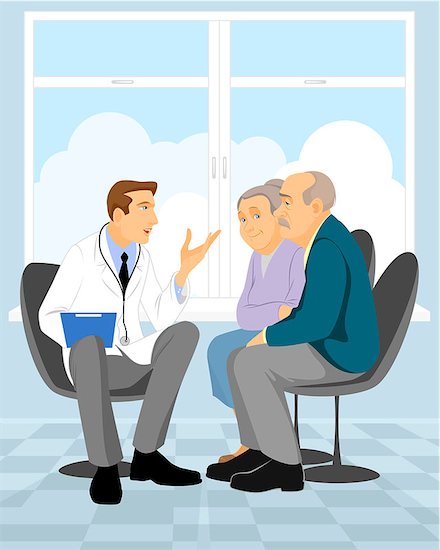Posts tagged HIV healthcare

The Connection Between HIV and Osteoporosis
HIV is a crippling disease that slowly but surely tries to break down your body’s defenses. The virus compromises your immune system and your ability to fight off infections, leaving you vulnerable to the diseases of the world. One such condition includes osteoporosis.
Osteoporosis is a condition that affects both men and women over the age of 50. More than 4 percent of men and 16 percent of women over the age of 50 live with this disease in their femur neck or lumbar spine. To make matter worse, those with HIV are more likely to develop osteoporosis and scientist are unsure why.
How Osteoporosis Affects the Body
The bones are the structure and frame of our body, allowing us the ability to move. Strong and healthy bones are needed to keep the body upright, moving, and working properly. When osteoporosis strikes, the bones in our body begin to hollow out. This loss of bone density and mass causes bones to become weaker, leaving them susceptible to breakage.
Severe cases are known cause damage when a person sneezes or receives a minor bump. The longer a person has osteoporosis, the more likely they are to experience hip fractures, a collapsed vertebra, severe back pain, a loss of height, and spinal deformities.
How Are the Two Diseases Connected?
Over 54 million Americans live osteoporosis, while 1.2 million have HIV. Many studies show that the two disease are somehow connected. The loss of bone density occurs faster in those with HIV. What scientists don’t know is the exact cause. However, that hasn’t stopped them from trying to figure out why patients with HIV develop osteoporosis. The most common theories are the following:
- HIV medications.
- Long-term use of other medications like blood thinners, an antiseizure medicine, and corticosteroids.
- Old age.
- HIV infection.
What Symptoms Should You Look For?
Unfortunately, it can be hard to determine if you have osteoporosis unless you have broken a bone. This symptom the first sign of the disease. The U.S. Department of Health and Human Services (HHS) recommends bone density test for women over the age of 65, as they are the most at risk for the disease.
If you are HIV positive and over the age of 50, you should get tested as well. It’s important to look out for strain in your bones and joints, as well of any abnormal pain in those areas caused by a sudden bump or fall.
Preventing Osteoporosis
If you are HIV positive but do not have osteoporosis, there are measures that you can take to prevent the disease. A healthy diet will replenish the nutrients you need to maintain healthy bones. Be sure to eat plenty of foods with calcium and vitamin D. A healthy lifestyle will also slow the rate of bone loss. Exercise often and cut out bad habits like smoking and drinking alcohol. The most important thing that you can do is see your doctor or HIV specialist. An expert can guide you and the risk and steps to dealing with HIV and disease like osteoporosis.

Nanotechnology May Improve HIV Medicines
Scientists and researchers focus on the improvement of HIV medicines in order to one day find a cure for the virus. Another reason the medical society puts so much effort into better medicine is to improve the lives of patients. In a new trial, the University of Liverpool has found success in using nanomedicine to potentially reduce the dosage of HIV treatment.
Using Nanotechnology for HIV Medicines
Nanotechnology is the process of making things on a smaller scale. That requires the manipulation of matter on the atomic, molecular, and supramolecular level. In nanomedicine, this means smaller, less expensive pills that work more effectively. This technology can change the way that future medicine is made.
The University of Liverpool’s Success
Both doctors and patients alike are hopeful for nanomedicine’s success. The University of Liverpool led a trial to prove the benefits of this type of medicine, with the intent to promote its usage within the scientific community.
The results from their trial showed that nanomedicine is far more effective. The body is able to absorb more of the drug. This means that patients can receive the same quality treatment and reduce the number of dosages they take. In fact, they found that patients could take potentially take half of the dosage and fight off the disease.
Today’s HIV therapies require daily doses just to keep up with the virus. This medicine can save HIV-positive individuals a significant amount of money on treatment. In certain countries where HIV is prevalent, this could mean better access to treatment by making the drugs more affordable.
Nanomedicine may also prevent non-adherence to therapy, which happens often when patients undergo the strain of taking medications daily. If the success of this trial can influence future HIV medicine, then this might prove great news for patients fighting against the virus. Hopefully, more research can lead to the technology’s implementation.

Antiretroviral Drugs for HIV Link to Neurological Issues
In the fight against HIV, antiretroviral drugs are the strongest weapon we have. While these medications do not cure or kill the virus, they stop it from progressing any further. Unfortunately, this treatment is a combination of several different types of drugs. When combined, they slow down HIV. However, according to new research, they may also leave significant neurological damage.
The Risks of Antiretroviral Drugs
Like most drugs for serious conditions, antiretroviral drugs do have side effects. However, their ability to stop the progression of HIV to AIDS has outweighed any minor complications. To this day, they are so successful that patients with AIDS are a rarity.
Some patients have been known to experience appetite loss, lipodystrophy, diarrhea, fatigue, mood changes, nausea, and bone loss. Scientists are working to make these drugs stronger and safer for patients. With the right precautions, patients can even make the side effects less debilitating.
The Connection to Alzheimer’s Disease
At the University of Pennsylvania, research has implicated some antiretroviral drugs in the progress of Alzheimer’s disease. They suggest that protease inhibitors are the cause. Protease inhibitors are the drugs that work the best against HIV. Apparently, some of these drugs promote the growth of the peptide beta-amyloid, which damages neurons.
“Protease inhibitors are very effective antiviral therapies, but they do have inherent toxicities,” said Kelly Jordan-Sciutto, senior author on the study. “Our findings may cause us to rethink how we’re using these drugs and even consider developing an adjunctive therapy to reduce some of these negative effects.”
Through testing, they were able to identify that the drugs did indeed cause the reaction and damage to the neurons. However, they are working to inhibit the enzyme called BACE1, which leads to the production of the beta-amyloid.
“Targeting PERK and/or BACE1 could help contribute to a therapeutic approach to treat drug-associated cognitive disorders.” said Jordan-Sciutto.

Age Affects HIV Treatments in Individuals
HIV affects many people in the United States, and finding the right HIV treatments is difficult. A new article, published in the Journal of the American Geriatrics Society, suggests that age affects treatment for elderly patients. New age-specific strategies need to be developed to combat the virus.
Age and HIV
Unfortunately, a certain percentage of young people in America have contracted HIV. According to the CDC, in 2012, around 44% of young people around the age of 18 to 24 years old were living with HIV they did not know they had. Even more frightening is the fact that by 2014, young people around the age of 13 to 24 years old made up more than 1 in 5 new HIV diagnosis.
Meanwhile, the elderly are at risk too. Older adults aged 55 and older, account for at least 26% of the estimated 1.2 million people living with HIV. This group, in particular, is at a greater risk. They have the same risk factors as younger people, but they are less aware of what can cause HIV.
Developing Age-Specific HIV Treatments
Since many older adults are less aware of HIV risk factors, they have an increased risk for late or missed diagnosis. Even worse, they are more susceptible to disease, meaning drugs carry more side effects for them. Researchers began investigating based on the need for elderly patients to receive proper HIV treatments.
“Our article highlights the need for more research on screening, evaluation, and treatment in older adults infected with HIV. As the number of older people living with HIV grows, we need scientifically sound data to help prepare our clinicians and healthcare systems for the unique needs and expectations of this group,” said Dr. Aroonsiri Sangarlangkarn, co-author of the Journal of the American Geriatrics Society article.
Hopefully, physicians will see this research as a means to find better HIV treatments for older adults. Using the right tools can help with diagnosing these patients and helping them live with the disease.

Teens Still Putting Health at Risk with Unsafe Sex Practices
While the world clamors to fight epidemics like HIV, recent findings show that one major contributor to health in the future is being neglected. Worldwide, adolescents are considered a generally healthy population. This assumption leads to focusing on other groups when it comes to healthcare, both preventative and otherwise. One study yielded sobering facts about the up-and-coming generation regarding healthcare, unsafe sex practices, and overall well-being.
Study Shows Teens Are Taking Chances With Unsafe Sex
The report targeted those aged 10–24 years old. Over 65% of those in this age group live in countries where certain factors threaten their well-being, with little attention being paid to this fact. Since 1990, unsafe sex practices have been a risk factor for poor health. In that year, the problem ranked at #13 on the list of health threats. In 2013 we saw it climb to the number two spot. This makes unsafe sex the fastest growing threat to youth today. Results like HIV, AIDS, injury, violence, and early pregnancy set the stage for ill health in the future. Most areas where the risks are increasing, the health problems in question are treatable, even preventable. Unfortunately, little attention is given to these matters, much to the chagrin of health experts.
In many regions where this threat is a growing concern, conflicting healthcare laws related to providing treatment for adolescents can limit progress in these areas. Another obstacle is healthcare coverage in that in some lands, a married woman may have access to contraceptives, but an unmarried girl legally does not. Around the world, this age group has the poorest coverage.
The Future of the World’s Health at Stake
These youths make up the largest generation of all time. Challenges facing medical science, like HIV, will only mount if this growing generation is not taken into consideration now. HIV is but one example. Really there are a number of risk factors—with depression and alcohol abuse topping the list. As this generation ages, the state of the world’s health will be strongly influenced by their state of health. Currently, that paints a bleak picture of the future as far as health and well-being are concerned.





